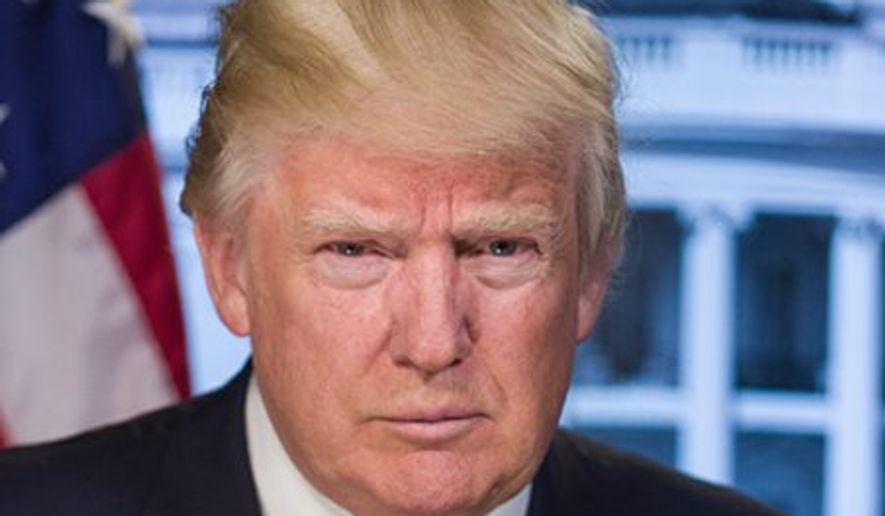Shortly after Donald J. Trump became the 45th President of the United States on Jan. 20, WhiteHouse.gov took down a webpage dedicated to fighting climate change and replaced it with “An America First Energy Plan.”
The new energy vision is committed to policies that “lower costs for hardworking Americans and maximize the use of American resources, freeing us from dependence on foreign oil.”
It further pledges to eliminate “harmful and unnecessary” federal regulations and policies; revitalize the U.S. coal industry; shift the federal government’s focus from global climate change to protecting U.S. water and air quality; and strengthen responsible stewardship of the environment.
During Mr. Trump’s first 100 days in office, he took several major steps that affect U.S. energy and environmental sectors. These actions include:
January 24 — Signed “Expediting Environmental Reviews and Approvals for High Priority Infrastructure Projects.”
This executive order resurrected the Keystone XL and Dakota Access oil pipelines, which had been blocked or hampered by the Obama administration and others.
“We’ll see if we can get that pipeline built. A lot of jobs, 28,000 jobs — great construction jobs,” Mr. Trump said at the signing ceremony.
When Keystone XL is completed, the Canada-to-Texas pipeline is expected to carry more than 700,000 barrels of Canadian oil each day to refineries along the U.S. Gulf Coast.
The Dakota Access pipeline began filling with oil in late March, although it still needs approval from a Nebraska agency.
Mr. Trump also signed an order promoting the use of American-made steel for oil pipelines.
February 28 — Signed “Presidential Executive Order on Restoring the Rule of Law, Federalism, and Economic Growth by Reviewing the ’Waters of the United States’ Rule.”
This executive order told the Environmental Protection Agency to begin dismantling the “Waters of the United States” rule inherited from the Obama administration, which expanded the authority of the EPA and the Army Corps of Engineers over a vast range of streams, lakes, ponds and other waterways.
“EPA’s so-called Waters of the U.S. rule is one of the worst examples of federal regulation. It has truly run amok,” Mr. Trump said at the White House signing ceremony. “The Clean Water Act says the EPA can regulate navigable waters, meaning waters that truly affect interstate commerce,” he said. “A few years ago, the EPA decided that navigable waters can mean nearly every puddle or every ditch on a farmer’s land, or any place else they decide, right? It was a massive power grab.”
The Waters of the United States rule was unveiled in March 2015, but was quickly decried by energy companies, the agricultural industry and others. A legal challenge was filed and in October 2015, a federal court stayed the rule.
March 28 — Signed “Presidential Executive Order on Promoting Energy Independence and Economic Growth.”
This wide-ranging executive order opened up federal lands to coal mining and began unraveling the EPA’s Clean Power Plan.
“The action I’m taking today will eliminate federal overreach, restore economic freedom and allow our companies and our workers to thrive, compete and succeed on a level playing field for the first time in a long time,” Mr. Trump said.
Vice President Mike Pence said that with the executive order, “The war on coal is over.”
The executive order also had the effect of ending the use of a “social cost of carbon” estimating tool in federal regulations and policies.
The controversial metric was perceived by some as measuring climate change costs or savings, but opponents said it permitted federal agencies to justify expensive, business-chilling rules with unfounded claims about climate change.
April 26 — Signed “Presidential Executive Order on the Review of Designations Under the Antiquities Act”
This executive order directed the Interior Department to review national monument designations for the past two decades, to ensure that the Antiquities Act had not been violated. The 1906 act empowers presidents to designate an area as a monument, but explicitly says it should be limited to the “smallest area” possible.
Mr. Trump said the previous administration had “unilaterally put millions of acres of land and water under strict federal control” and eliminated the ability “of the people who actually live in those states to decide how best to use that land.”
“Today, we are putting the states back in charge — big thing,” Mr. Trump said.
Interior Secretary Ryan K. Zinke is expected to provide an initial report to the White House in mid-June and have a final study ready in the fall.
One project especially likely to be reviewed is President Obama’s recent order to designate 1.3 million acres in Utah as Bears Ears National Monument. There are also more than two dozen monuments that are larger than 100,000 acres in size and likely to be reviewed.
No president has rescinded a monument designation to date, and some environmental groups have pledged to sue to stop such an action.
April 28 — Signed “Presidential Executive Order Implementing an America-First Offshore Energy Strategy”
This executive order cancels the previous administration’s ban on new offshore drilling leases and is expected to result in new energy exploration in the Atlantic, Pacific and Arctic oceans, as well as in the Gulf of Mexico.
“We’re opening it up,” Mr. Trump said at the signing ceremony.
“Today, we’re unleashing American energy and clearing the way for thousands and thousands of high-paying American energy jobs. “Our country is blessed with incredible natural resources, including abundant offshore oil and natural gas reserves. … This executive order starts the process of opening offshore areas to job-creating energy exploration.
“It reverses the previous administration’s Arctic leasing ban, so hear that — it reverses the previous administration’s Arctic leasing ban, and directs Secretary Zinke to allow responsible development of offshore areas that will bring revenue to our treasury and jobs to our workers.”
• This article is drawn from Washington Times news stories.




Please read our comment policy before commenting.